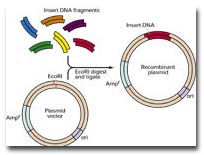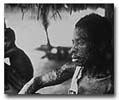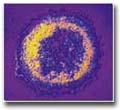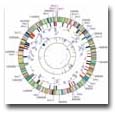![]()
Robert Koch publishes a paper on his work with anthrax, pointing explicitly to a bacterium as the cause of this disease. This validates the germ theory of disease.
Albert Neisser identifies Neisseria gonorrhoeae, the pathogen that causes gonorrhea. He may be the first to attribute a chronic disease to a microbe.
Paul Ehrlich refines the use of the dye methylene blue in bacteriological staining and uses it to stain the tubercle bacillus. He shows the dye binds to the bacterium and resists decoloration with an acid
alcohol wash.
Robert Koch isolates the tubercule bacillus, Mycobacterium tuberculosis.
Theobald Smith and F.L. Kilbourne establish that ticks carry Babesia microti, which causes babesiosis in animals and humans. This is the first account of a zoonotic disease and also the foundation of all later work on the animal host and the arthropod vector.

The organizing meeting of the Society of American Bacteriologists is held at Yale, December 28, 1899. The Society (later called the American Society for Microbiology) is the first independent organization devoted to the promotion and service of bacteriology in the United States.
Jules Bordet and Octave Gengou develop the complement fixation test. They show that any antigen-antibody reaction leads to the binding of complement to the target antigen.
Fritz R. Schaudinn and Erich Hoffman identify Treponema pallidum, the cause of syphilis.
Raimond Sabouraud summarizes about twenty years of his systematic and scientific studies of dermatophytes and dermatophytoses in a classic treatise, Les Teinges. He introduces a medium for the growth of pathogenic fungi.
James Brown uses blood agar as a medium to study the hemolytic reactions for the genus Streptococcus and divides it into three types, alpha, beta and gamma.
Alexander Fleming publishes the first paper describing penicillin and its effect on gram positive microorganisms. This finding is unique since it is a rare example of bacterial lysis and not just microbial antagonism brought on by the mold Penicillium. With Florey and Chain, Fleming is awarded the Nobel Prize in Medicine and Physiology in 1945. (American Society for Microbiology Archives)
Rebecca Lancefield describes a method of producing streptococcal antigens and sera for use in precipitin tests and suggests that this approach can be used epidemiologically to identify the probable origin of a given strain.
Alice Evans accomplishes the first typing of a strain of bacteria with bacteriophage.
Pathologist
Howard Florey and biochemist Ernest Chain produce an extract of penicillin
- the first powerful antibiotic - from Fleming's mold cultures and demonstrate
that it can cure infections in animals. With Fleming, Florey and Chain
are awarded the Nobel Prize in Medicine and Physiology in 1945.
Ernest Chain and E.P. Abraham describe a substance from E. coli that can inactivate penicillin. It was the first bacterial product that was recognized to mediate resistance to an antibacterial agent.
George Hirst demonstrates that influenza virus agglutinates red blood cells. Since the cell attachment proteins of some viruses also agglutinate red blood cells, this property provided a rapid, accurate and quantitative method of counting virus particles.

Albert Schatz, E. Bugie and Selman Waksman discover streptomycin, soon to be used against tuberculosis. Waksman is awarded the Nobel Prize in Medicine and Physiology in 1952.
Microbiologist John Franklin Enders, virologist Thomas H. Weller and physician Frederick Chapman Robbins develop a technique to grow polio virus in test tube cultures of human tissues. This approach gives virologists a practical tool for the isolation and study of viruses. Enders, Weller and Robbins are awarded the Nobel Prize in Medicine and Physiology in 1954.
Robert Hungate publishes a description of the roll-tube culture technique, which permits culturing anaerobes, a key advance in studying anaerobic bacteria from cow rumen.
Francis Crick and Maurice Wilkins, together with James Watson, describe the double-helix structure of DNA. The chemical structure is based on x-ray crystallography of DNA done by Rosalind Franklin. Crick, Wilkins and Watson are awarded the Nobel Prize in Medicine and Physiology in 1962. Geoffry M. Cooper, The Cell, 2d ed, 2000. (Courtesy of ASM Press and Sinauer Associates)

Joseph H. Burkhalter and Robert Seiwald make an essential contribution to the identification of antigens by developing the first antibody labeling agent, fluorescein isothiocyanate (FITC). Widespread use of FITC catalyzed the generation of other labeling procedures such as the radio-immunoassay and enzyme-linked immuno-absorbant assay (ELISA).
Brian McCarthy and E.T. Bolton describe a method for quantitative determination of the extent of hybridization of DNA or RNA from different biological sources, making it possible to determine the extent of sequence homology in the genomes of the organisms.
Penn Professor of Medicine and Anthropology Baruch Blumberg describes the "Australia Antigen" (hepatitis B antigen) that is found in the blood of viral hepatitis sufferers. Together with Irving Millman, Blumberg develops a vaccine against the virus. Some consider it to be the first vaccine against cancer because of the strong association of hepatitis B with liver cancer. With Gadjusek, Blumberg is awarded the Nobel Prize in Medicine and Physiology in 1976.
Alfred Bauer, William Kirby, John Sherris and Marvin Turck establish standards for antibiotic susceptibility testing based on a single disc diffusion procedure that distinguishes susceptible strains of bacteria from their resistant variants. This method permits clinical laboratories to provide physicians with accurate, reproducible and reliable information with which to chose antimicrobials. (Department of Pathology and Laboratory Medicine, University of Pennsylvania)
Don Brenner and colleagues establish a more reliable basis for the classification of clinical isolates among members of the Enterobacteriaceae. Studies on many species have proven the value of DNA-DNA hybridization to define a species.
Hamilton Smith and Kent W. Wilcox describe the action of restriction enzymes, a bacterial defense mechanism which quickly becomes a tool for sizing DNA. With Nathans and Arber, Smith is awarded the Nobel Prize in Medicine and Physiology in 1978.
Penn medical graduate Stanley Cohen (M 1960), Annie Chang, Robert Helling, and Herbert Boyer show that if DNA is broken into fragments and combined with plasmid DNA, such recombinant DNA molecules will reproduce if inserted into bacterial cells. The discovery is a major breakthrough for genetic engineering, allowing for such advances as gene cloning and the modification of genes. (Geoffry M. Cooper, The Cell, 2d ed, 2000. Courtesy of ASM Press and Sinauer Associates)

Georg Kohler and Cesar Milstein physically fuse mouse lymphocytes with neoplastic mouse plasma cells to yield hybridomas that can produce specific antibodies and survive indefinitely in tissue culture. This approach offers limitless supplies of monoclonal antibodies, permitting the generation of diagnostic reagents that are highly specific and also function as probes to study cell function. With Jerne, Kohler and Milstein are awarded the Nobel Prize in Medicine and Physiology in 1984.
Walter Gilbert and Fred Sanger independently develop methods to determine the exact sequence of DNA. Gilbert uses the technique to determine the sequence of the operon of a bacterial genome. Sanger and colleagues use the technique to determine the sequence of all 5375 nucleotides of the bacteriophage _X174, the first complete determination of the genome of an organism. With Berg, Gilbert and Sanger are awarded the Nobel Prize in Chemistry in 1980. (©SIU/Visuals Unlimited)
Centers
for Disease Control researchers Joseph McDade and Charles C. Shepard isolate
and identify Legionella pneumophila as the bacterial pathogen in a newly
discovered pulmonary disease.
Mothers in Old Lyme (CT) describe a high level of illness among children, which is diagnosed as juvenile rheumatoid arthritis. A research group led by Alan Steere finally begins to investigate in 1977 and using an epidemiological approach finds that deer ticks are the vector.

Smallpox (variola) is declared officially eliminated; last natural case seen in Somalia in 1977. THE ONLY MICROBIAL DISEASE EVER COMPLETELY DEFEATED.
Penn medical graduate Stanley B. Prusiner (M 1968) finds evidence that a class of infectious proteins he call prions causes scrapie, a fatal neurodegenerative disease of sheep. Prusiner is awarded the Nobel Prize in Medicine and Physiology in 1997.
Willy Burgdorfer and colleagues report successful investigation and treatment of Lyme disease. They were able to isolate the organism, a treponema-like spirochete, subsequently named Borrelia burgdorferi, and show antibody formation in patients with clinically diagnosed Lyme disease.

Luc Montaigner and Robert Gallo announce their discovery of the immunodeficiency virus (HIV) believed to cause AIDS. (American Society for Microbiology Archives)
Barry J. Marshall and J. Robin Warren demonstrate that a bacterium called Campylobacter pylori, later called Helicobacter pylori, is isolated from patients with ulcers.
Kary Mullis uses a heat stable enzyme from the thermophile, Thermus aquaticus (identified by Thomas Brock in 1967), to establish polymerase chain reaction technology. Mullis is awarded the Nobel Prize in Chemistry in 1993. (Department of Pathology and Laboratory Medicine, University of Pennsylvania)

David Relman and colleagues show that cat scratch fever or bacillary angiomatosis is caused by a bacterium that cannot be cultured. The authors used two molecular techniques, analysis of 16S rRNA and polymerase chain reaction amplification to identify the causative agent.
Craig Venter, Hamilton Smith, Claire Fraser, and colleagues at TIGR elucidate the first complete genome sequence of a microorganism - Haemophilus influenzae Rd. Since that time, the genome sequences of many important human pathogens, such as M. tuberculosis, Treponema pallidum, Campylobacter jejuni, Helicobacter pylori, Vibrio cholerae, and Legionella pneumophila have been determined. (The Institute for Genome Research)
This timeline is adapted and reproduced with permission from the American Society for Microbiology.





